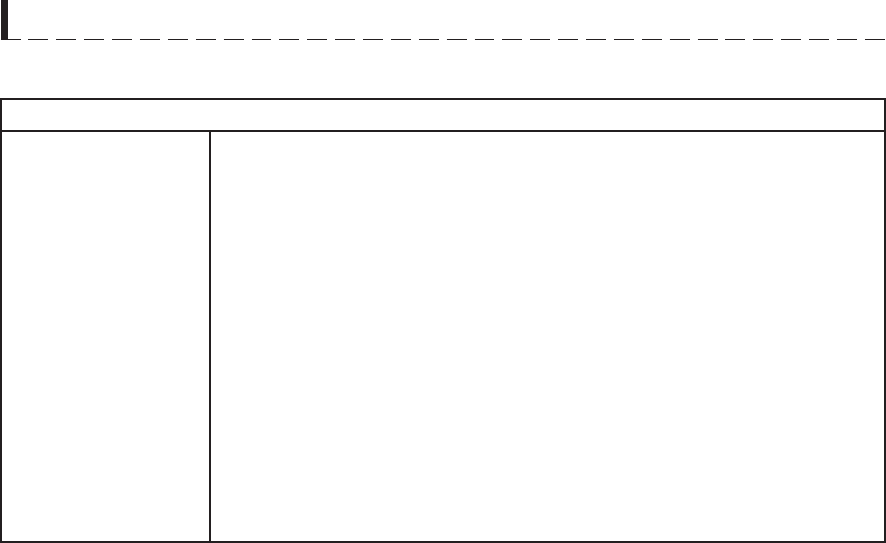
9
INFORMATION YOU NEED TO KNOW
• Check that food is thoroughly cooked/reheated before serving.
• Cooking time will be affected by the shape, depth, quantity and temperature of food together with the size,
shape and material of the container.
Density
Quantity
Size
Shape
Temperature of Food
Seasoning and
Flavoring
Food Characteristics
Food density will affect the amount of cooking time. Cut the food into thinner parts,
if possible, and arrange in single layer.
The cooking time must be increased as the amount increases.
Small foods and small pieces cook faster than large ones, as heat can penetrate
from all sides to the center. For even cooking make all the pieces the same size.
Foods which are irregular in shape, such as chicken breasts or drumsticks,
may take longer to cook in the thicker parts. Check that these parts are cooked
thoroughly before serving.
The initial temperature of food affects the cooking time. Chilled foods will take
longer to cook than foods at room temperature. The temperature of the container
is not the actual temperature of the food or drink.
Seasoning or fl avoring are best added after cooking. If added as marinades or
rubs, the taste may become less pronounced when cooking with steam. Add
seasoning or fl avoring again after cooking, if necessary.
CAUTION:
• Always use dry pot holders or oven mitts to remove food or utensils from the oven.
• Be careful when opening the oven door to allow steam to dissipate.
• Do not remove the food from the oven with your bare hand.
• Check the temperature of food and drink and stir before serving.
• Take special care when serving to babies, children or the elderly.
FOR STEAM COOKING
* ALWAYS have food in the oven when it is on to
absorb the microwave energy.
* Your oven is rated 900 watts using the IEC Test
Procedure. In using recipes or package directions,
check food at the minimum time and add time
accordingly.
* Condensation is a normal part of microwave
cooking. Room humidity and the moisture in
food will infl uence the amount of moisture that
condenses in the oven. Generally, covered
foods will not cause as much condensation as
uncovered ones. Vents on the oven back must not
be blocked.
* Arrange food carefully. Place thickest areas toward
outside of dish.
* Watch cooking time. Cook for the shortest amount
of time indicated and add more as needed. Foods
severely overcooked can smoke or ignite.
* Cover foods while cooking. Check recipe or
cookbook for suggestions: paper towels, wax
paper, microwave plastic wrap or a lid. Covers
prevent spattering and help foods to cook evenly.
* Shield with small flat pieces of aluminum foil
any thin areas of meat or poultry to prevent
overcooking before dense, thick areas are cooked
thoroughly.
ABOUT MICROWAVE COOKING
* Stir foods from outside to center of dish once or
twice during cooking, if possible.
* Turn foods over once during microwaving to speed
cooking of such foods as chicken and hamburgers.
Large items like roasts or turkey breasts must be
turned over at least once.
* Rearrange foods like meatballs halfway through
cooking both from top to bottom and from the
center of the dish to the outside.
* Add standing time. Remove food from oven
and stir, if possible. Cover for standing time
which allows the food to fi nish cooking without
overcooking.
* Check for doneness. Look for signs indicating that
cooking temperatures have been reached.
Doneness signs include:
– Food steams throughout, not just at edge.
– Center bottom of dish is very hot to the
touch.
– Poultry thigh joints move easily.
– Meat and poultry show no pinkness.
– Fish is opaque and fl akes easily with a fork.


















